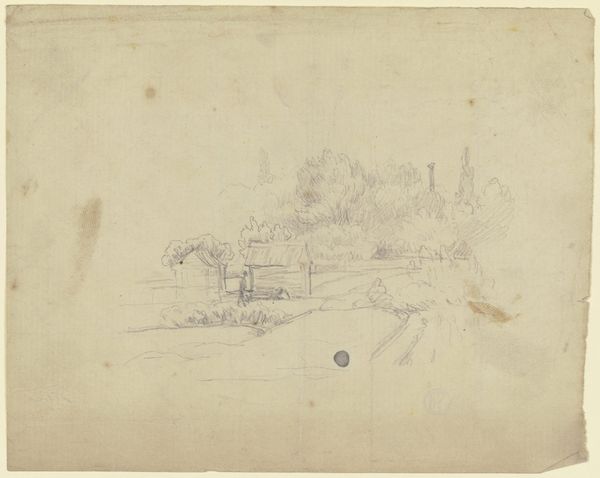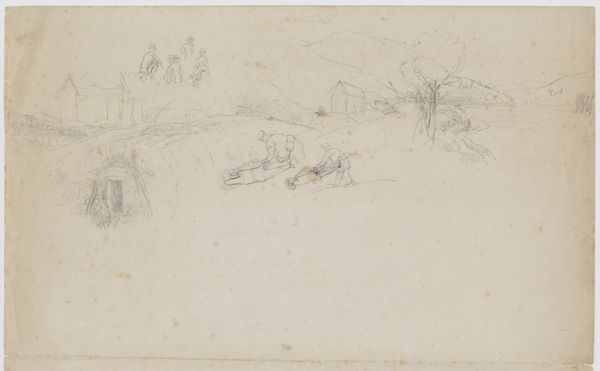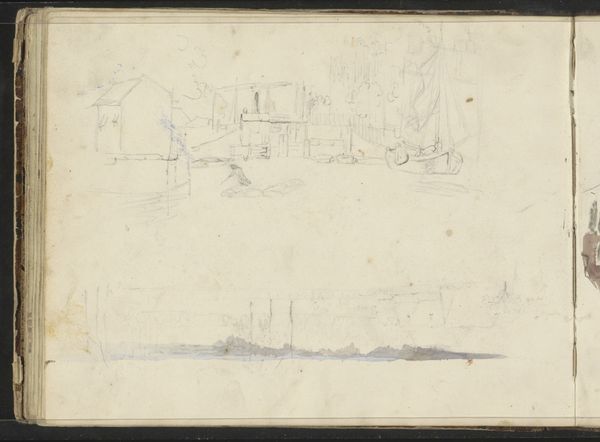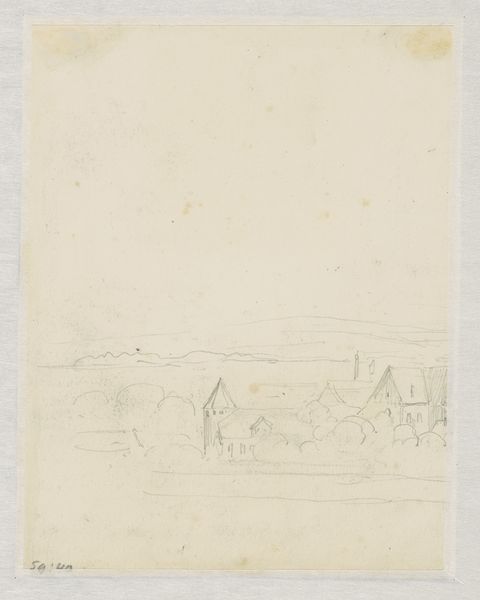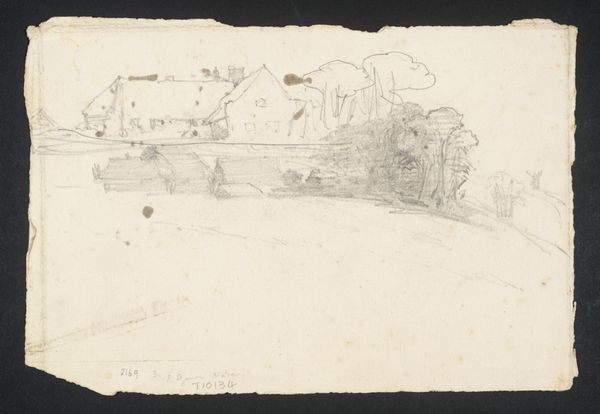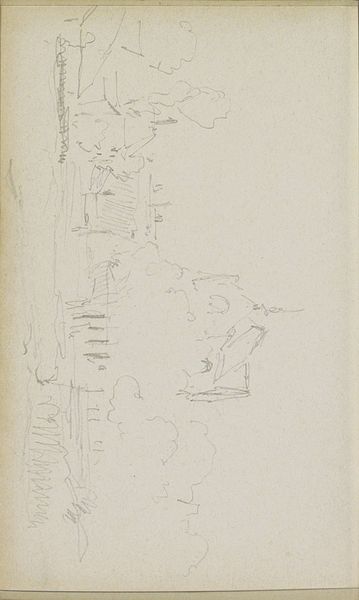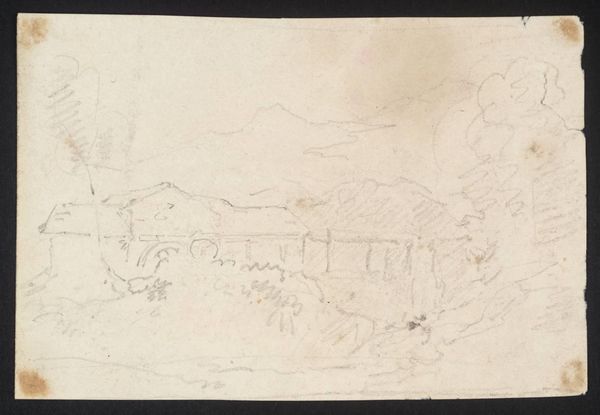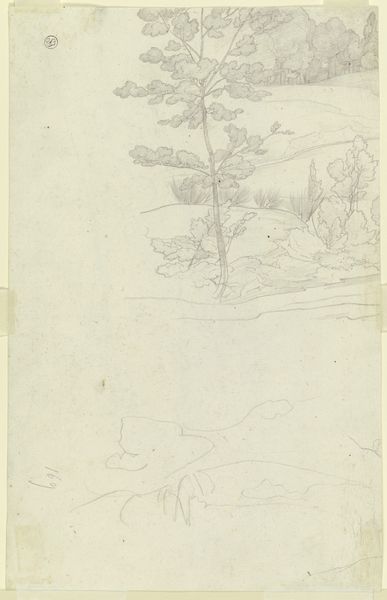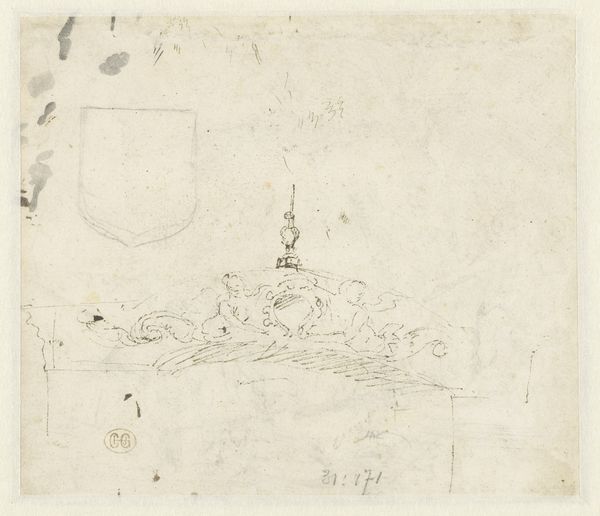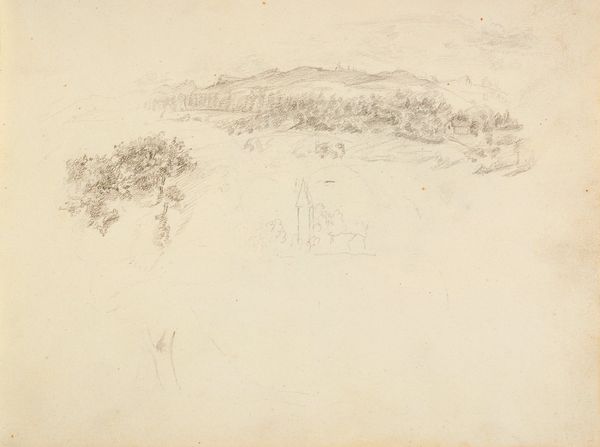
drawing, pencil
#
drawing
#
landscape
#
pencil
#
realism
Copyright: Public Domain
Curator: Welcome. Today, we're looking at "Row of Houses," a pencil drawing by Fritz Bamberger, housed here at the Städel Museum. Editor: It’s...faint, isn't it? Ethereal almost. And quite a panoramic view; one gets a sense of the urban landscape and perhaps the waterway these houses abut. Curator: Indeed. Notice Bamberger's use of pencil. He employs varied pressure to sketch the buildings, really examining the architecture through tonal range and line work alone. I wonder, what social dynamics are revealed through its existence? A drawing is a very intimate way to produce such imagery. Editor: It is intriguing how accessible and transportable a pencil sketch is compared to painting. Perhaps this speaks to a broader accessibility of landscape imagery for a burgeoning middle class, with the availability and affordability of paper enabling new modes of representation. Also, is that light source consistent? It feels less like direct observation and more of a study of form for practical usage perhaps? Curator: That's a keen observation. Its immediacy points less toward a finished product and more towards a preliminary study. Could Bamberger have been commissioned, and was this study the genesis of something grander in scale and visibility, such as paintings for a patron with the intent of promoting specific architecture styles of urban planning at the time? Editor: Interesting! Looking at the uniformity in the depiction of the structures – the regularity of roofs and the consistent size, suggests this might point to standardization in design, speaking to specific cultural approaches of the era. Maybe related to legal codes governing constructions during the specific rise of the urban class, influencing architectural styles of homes at the time, which such drawings become a commodity by those impacted. Curator: Right. This takes what seems a simple, understated drawing and recontextualizes it, seeing the interplay between art and architecture. We start to understand its public role; it becomes something more complex and revealing. Editor: Yes! And on my initial read of faint and ethereal, I now also see, in stark contradiction, a very functional piece that speaks to capitalistic intention as a commodity tied to new architecture. Curator: Absolutely, an object that opens pathways to so many other considerations. Editor: Thanks for that added perspective, indeed!
Comments
No comments
Be the first to comment and join the conversation on the ultimate creative platform.
